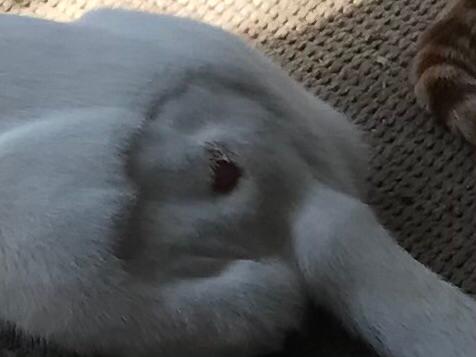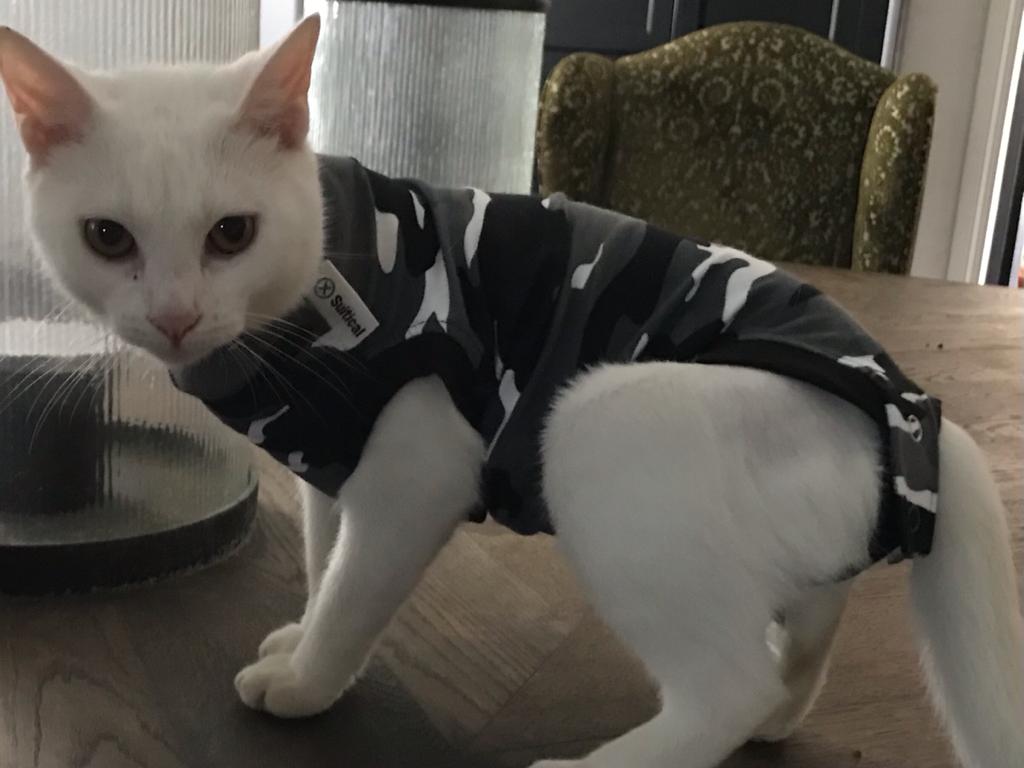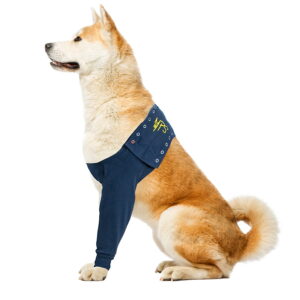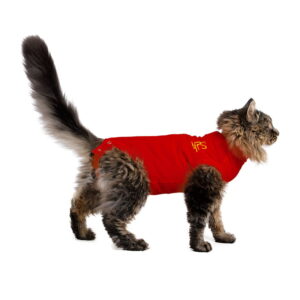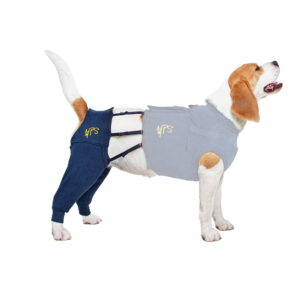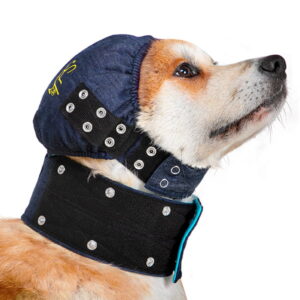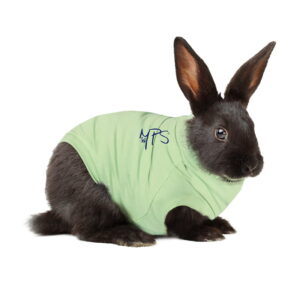How to Stop Your Cat From Licking a Wound (Vet-Approved Tips) + Case Study
If your cat keeps licking a wound, you’re not alone—and you’re right to act quickly. Licking can delay healing, introduce infection, and even create a painful lick–scratch cycle. This guide shares vet-aligned, step-by-step ways to protect healing, compares cone-of-shame vs recovery suits, shows how to size and fit a suit, and includes a real South African case study from a TailMe customer.
Safety first: Always follow your veterinarian’s instructions. Do not apply home remedies, human creams, or medications without vet approval.
Is It Normal for Cats to Lick Wounds?
A little grooming around a wound can be normal, but direct licking of stitches, scabs, hot spots, or open skin is risky. Saliva and rough tongue papillae can:
- Re-open incisions and delay healing
- Introduce bacteria leading to infection
- Create chronic “lick granulomas” and self-trauma
If your cat fixates on the area, it’s time to protect the wound with a barrier and reduce itch/pain under vet guidance.
Step-by-Step: How to Stop Your Cat From Licking a Wound
- Follow your vet’s wound-care plan
- Clean only as instructed (often with sterile saline).
- Keep the area dry unless told otherwise.
- Never use hydrogen peroxide, alcohol, essential oils, or human ointments unless your vet confirms they’re safe.
- Use a protective barrier: cone vs recovery suit
- Cones (e-collars) block access but can be stressful and awkward.
- A full-body recovery suit gently covers the wound so your cat can sleep, eat, and move more naturally. See comparison below.
- Manage pain and itch (vet guidance only)
- Ask your vet about appropriate pain relief, anti-itch meds, or antibiotics if infection is suspected.
- Address underlying triggers like fleas or allergies.
- Reduce stress and boredom
- Create a calm “recovery den” with a litter box nearby, soft bedding, and scratch posts.
- Offer short play sessions, food puzzles, and gentle affection. Calm cats lick less.
- Monitor progress and know red flags
- Take a daily photo to track swelling, redness, discharge, or scab changes.
- If you see heat, pus, a bad smell, your cat seems painful, lethargic, or won’t eat, or stitches open—call your vet urgently.
Cone vs Recovery Suit for Cats
| Feature | Cone (E-Collar) | Recovery Suit |
| Comfort & Movement | Blocks peripheral vision, can cause bumping into furniture. | Soft, breathable coverage that lets cats curl up, jump, and use whiskers naturally. |
| Stress & Sleep | Many cats find it stressful and stop grooming/eating well. | Often more “fear-free” with better sleep and appetite. |
| Wound Protection | Good for face/ear pawing, but some cats can still reach body or paw wounds. | Ideal for torso, side, flank, belly, tail base, and back wounds. |
| Bathroom & Hygiene | Needs no opening/closing but complicates eating and grooming. | Designed with quick-release openings for litter box use; wash and rotate as needed. |
| Cost & Practicality | Affordable, but can be knocked off. | Reusable and durable. Consider what your cat tolerates best for a smooth recovery. |
Shop options:
- TailMe is the South African importer of Suitical.
How to Fit a Cat Recovery Suit (Sizing Guide)
- Measure back length: From the base of the neck (collar area) to the base of the tail.
- Check weight and girth: Use your cat’s current post-op weight; if between sizes, contact us for fit advice.
- Try-on tips:
- Let your cat sniff the suit first.
- Slide the suit over the head, then one leg at a time.
- Smooth the fabric along the body; fasten snug but not tight (two-finger comfort check).
- Bathroom breaks: Use the built-in opening/flap; close again afterward to prevent licking.
- Wear time: Most cats wear a suit continuously for 7–14 days post-procedure (or as your vet advises). Keep a spare for washing.
Case Study: Sweetpea’s Healing Journey (Durban, SA)
According to veterinarians, wound licking is common in cats but can spiral into infection and self-mutilation. Traditional treatments like the “cone of shame” are often prescribed, yet many cats find them traumatic.
TailMe recognized these challenges and brought the Suitical Medical Recovery range to South Africa. The suits are soft, breathable, and designed to reduce stress while protecting wounds.
Janet—a devoted pet parent and feral rescue volunteer in Durban—needed help for Sweetpea, a tiny kitty with a stubborn licking wound on her lower back.
“I had tried everything from creams and ointments. I even tried using a cone on my cat to stop Sweetpea from licking her wound, but she hated it just as much as I did. It was traumatic for her, and wasn’t helping the wound heal. I knew there had to be a better solution out there.”
“I was immediately impressed by the suit’s design and how it was able to quickly stop my cat from licking the wound. But more importantly, it was instantly clear that the Suitical Suit was a much more comfortable and fear-free experience for my cat compared to the cone. She was able to move around more freely and didn’t seem to be bothered by it at all.”
“Sweetpea started healing after just three days, and I was so impressed that I handed back the cone to the vet. Actually, I was so impressed that I asked my vet to stock the suits instead.”
Janet’s takeaway: every pet deserves a comfortable, low-stress recovery.
When to See a Vet Urgently
- Stitches open, bleeding, or increasing redness/swelling
- Yellow/green discharge or foul smell
- Your cat is lethargic, painful, feverish, or not eating/drinking
- Persistent licking, chewing, or suit removal attempts despite barriers
- Any concern after spay/neuter or major surgery
If you’re unsure, call your vet—earlier is always better for wound care.
FAQs
Q: How do I stop my cat from licking a wound?
A: Combine vet-directed cleaning with a reliable barrier (cone or recovery suit). Most cats tolerate a soft, breathable recovery suit better, which helps them rest and heal.
Q: Is it bad if my cat licks her wound?
A: Yes—licking can delay healing, introduce bacteria, and cause self-trauma. Protect the site and follow your vet’s plan.
Q: How do I keep my cat from licking stitches after spay?
A: Use a well-fitted recovery suit that covers the abdomen, follow the post-op plan, limit jumping, and check the incision twice daily.
Q: What can I safely use to stop cat licking a wound?
A: Only vet-approved barriers and medications. Avoid human creams, essential oils, or harsh disinfectants unless your vet says they’re safe.
Q: Can I use bitter spray to stop cat licking wound?
A: Bitter sprays are rarely reliable on cats and may irritate skin. A recovery suit or cone is safer and more effective.
Q: Recovery suit vs e-collar for cats—what’s better?
A: For body, flank, belly, or back wounds, suits often win on comfort and stress reduction. Cones may still be needed for face/ear pawing.
Q: How long should a cat wear a recovery suit?
A: Typically 7–14 days or as your vet advises. Keep it on full-time except for supervised cleaning and suit changes.
Q: Best recovery suit for cats South Africa (price and delivery)?
A: TailMe imports the Suitical Medical Recovery range for SA. See current ZAR pricing and SA-wide delivery: Suitical – at home Recovery Suit – CAT.
Ready to help your cat heal comfortably? Shop SA-wide today:
